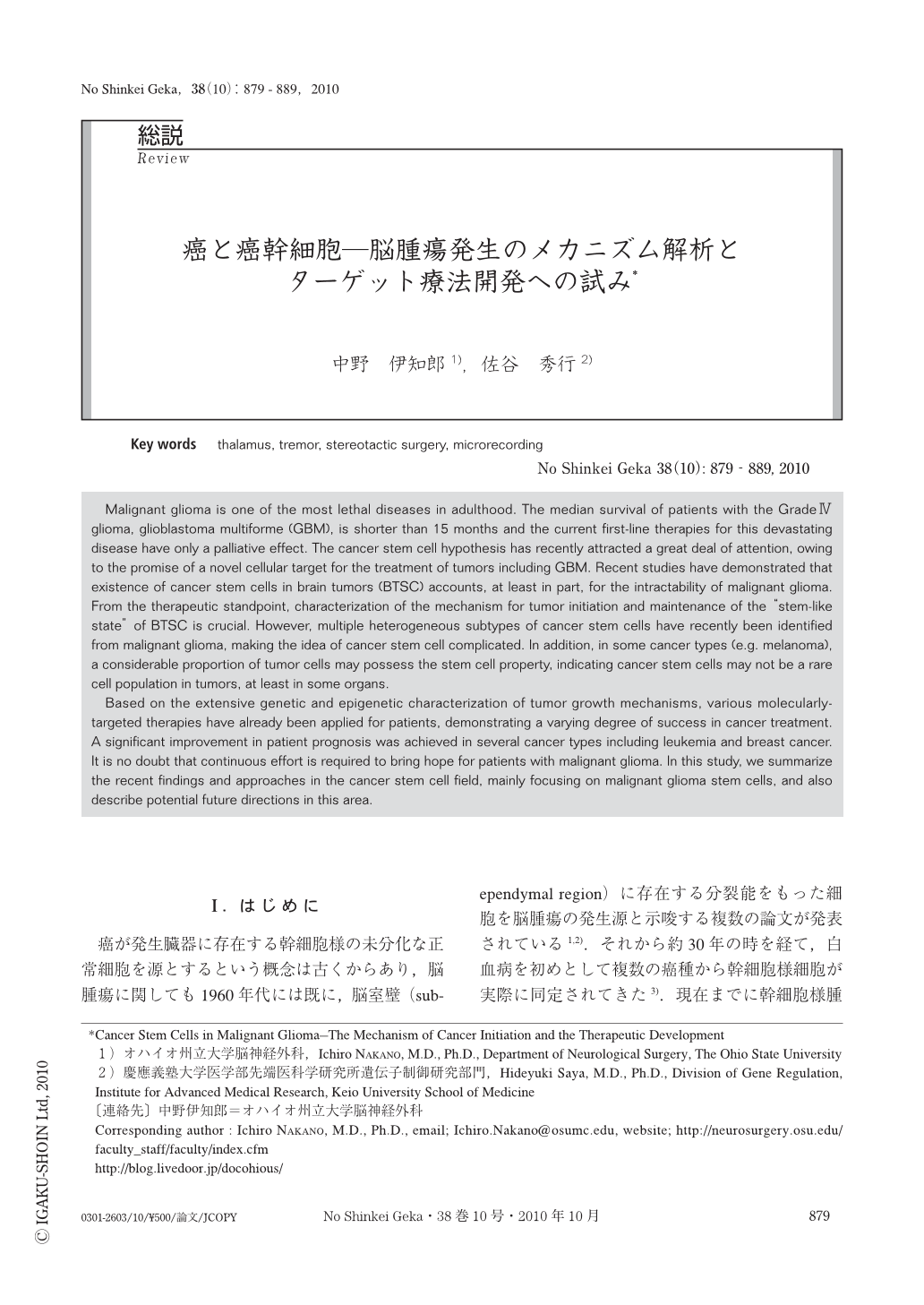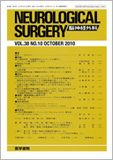Japanese
English
- 有料閲覧
- Abstract 文献概要
- 1ページ目 Look Inside
- 参考文献 Reference
Ⅰ.はじめに
癌が発生臓器に存在する幹細胞様の未分化な正常細胞を源とするという概念は古くからあり,脳腫瘍に関しても1960年代には既に,脳室壁(subependymal region)に存在する分裂能をもった細胞を脳腫瘍の発生源と示唆する複数の論文が発表されている1,2).それから約30年の時を経て,白血病を初めとして複数の癌種から幹細胞様細胞が実際に同定されてきた3).現在までに幹細胞様腫瘍細胞が同定された癌種としては,白血病のほかに,乳癌,悪性グリオーマ,前立腺癌,メラノーマなどがある4-9).
セルソートの技術とモノクローナル抗体の開発の発展から,血球系幹細胞の分野を中心に進んだ臓器特異的幹細胞の同定と解析は,臓器内細胞の細胞階層性(ヒエラルキー)の詳細な解明へとつながった.その知見の蓄積から,血球系幹細胞同定の手法を白血病細胞に適応する形で,癌における細胞階層性の研究が進み,白血病幹細胞の存在が1997年に同定された3).そしてその手法を固形癌に適応して,2003年以降,固形癌でも乳癌や脳腫瘍をはじめとするさまざまな臓器由来の腫瘍幹細胞の存在を見い出すに至っている.
特にこの数年で急速に積み上がってきたさまざまな研究データから,脳腫瘍に幹細胞様細胞が存在することはほぼコンセンサスとなっている.しかし同時に注意が必要なのは,クローナルに発生し,かつ多様な分化段階に位置する細胞から構成される1つの腫瘍が,正常幹細胞にみられるように厳密に制御された不可逆性の階層性をもっている(ヒエラルキーモデル)のか,あるいは分化した細胞も可逆的に幹細胞様性質を獲得できるのかについては,まだ議論がある.実際,分化した腫瘍細胞が幹細胞様腫瘍細胞に「脱分化」するという知見から幹細胞様腫瘍細胞は可逆性のある「状態」であることを示唆するデータも提示されている10,11).脳腫瘍に関して言うと,現在のところ腫瘍幹細胞の特異的マーカーがないこと(その単離法がないこと)から,さまざまな研究から提示される知見にはばらつきがみられる状態である.
Malignant glioma is one of the most lethal diseases in adulthood. The median survival of patients with the GradeⅣ glioma, glioblastoma multiforme (GBM), is shorter than 15 months and the current first-line therapies for this devastating disease have only a palliative effect. The cancer stem cell hypothesis has recently attracted a great deal of attention, owing to the promise of a novel cellular target for the treatment of tumors including GBM. Recent studies have demonstrated that existence of cancer stem cells in brain tumors (BTSC) accounts, at least in part, for the intractability of malignant glioma. From the therapeutic standpoint, characterization of the mechanism for tumor initiation and maintenance of the “stem-like state” of BTSC is crucial. However, multiple heterogeneous subtypes of cancer stem cells have recently been identified from malignant glioma, making the idea of cancer stem cell complicated. In addition, in some cancer types (e.g. melanoma), a considerable proportion of tumor cells may possess the stem cell property, indicating cancer stem cells may not be a rare cell population in tumors, at least in some organs.
Based on the extensive genetic and epigenetic characterization of tumor growth mechanisms, various molecularly-targeted therapies have already been applied for patients, demonstrating a varying degree of success in cancer treatment. A significant improvement in patient prognosis was achieved in several cancer types including leukemia and breast cancer. It is no doubt that continuous effort is required to bring hope for patients with malignant glioma. In this study, we summarize the recent findings and approaches in the cancer stem cell field, mainly focusing on malignant glioma stem cells, and also describe potential future directions in this area.

Copyright © 2010, Igaku-Shoin Ltd. All rights reserved.


